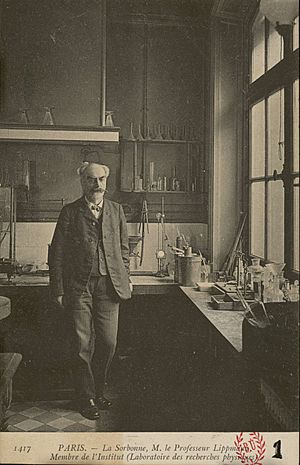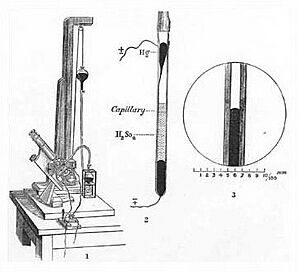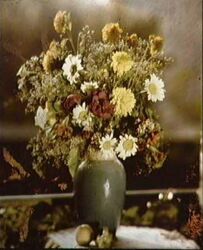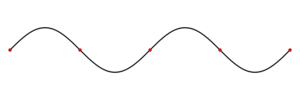Gabriel Lippmann facts for kids
Quick facts for kids
Gabriel Lippmann
|
|
|---|---|
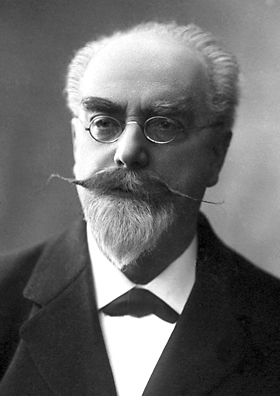
Lippmann in 1908
|
|
| Born |
Jonas Ferdinand Gabriel Lippmann
16 August 1845 Bonnevoie/Bouneweg, Luxembourg (since 1921 part of Luxembourg City)
|
| Died | 13 July 1921 (aged 75) SS France, Atlantic Ocean
|
| Nationality | French |
| Alma mater | École Normale Supérieure |
| Known for | Lippmann photography Lippmann electrometer Electrowetting Integral photography Converse piezoelectric effect |
| Awards | Nobel Prize for Physics (1908) |
| Scientific career | |
| Fields | Physics |
| Institutions | Sorbonne |
| Doctoral advisor | Gustav Kirchhoff |
| Other academic advisors | Hermann von Helmholtz |
| Doctoral students | Marie Curie |
Jonas Ferdinand Gabriel Lippmann (born August 16, 1845 – died July 13, 1921) was a famous French-Luxembourgish physicist and inventor. He won the Nobel Prize in Physics because he found a way to take color photographs. His method used a special light trick called interference.
Contents
Early Life and Education
Gabriel Lippmann was born in Bonnevoie, Luxembourg, on August 16, 1845. At that time, Bonnevoie was a part of Hollerich. Both places are now districts of Luxembourg City.
His father, Isaïe, managed the family's glove-making business. In 1848, his family moved to Paris, France. Gabriel was first taught by his mother, Miriam Rose. Later, he went to the Lycée Napoléon, which is now called Lycée Henri-IV.
People said he was a bit distracted but very thoughtful. He especially loved mathematics. In 1868, he joined the École Normale Supérieure in Paris. He didn't want to be a teacher, so he focused on studying physics instead.
In 1872, the French government sent him to Heidelberg University. There, he specialized in electricity with the help of Gustav Kirchhoff. He earned his doctorate degree with "summa cum laude" (highest honors) in 1874. Lippmann returned to Paris in 1875. In 1878, he became a physics professor at the Sorbonne. He taught about sound (acoustics) and light (optics) there.
Amazing Discoveries and Inventions
Lippmann made many important contributions to different areas of physics.
The Capillary Electrometer
One of Lippmann's early discoveries was how electricity and tiny liquid surfaces (capillary phenomena) are connected. This led him to invent a very sensitive device called the Lippmann electrometer. This electrometer was later used in the first ECG machine, which measures heart activity.
In 1883, John G. M'Kendrick described the device. It could measure very small electrical differences. Lippmann's PhD work in 1875 was also about this topic, called electrocapillarity.
Piezoelectricity
In 1881, Lippmann predicted something called the converse piezoelectric effect. This effect describes how certain materials can change shape when electricity is applied to them.
How Lippmann Invented Color Photography
Lippmann is best known for inventing a way to take color photographs. This method was based on the interference phenomenon of light. This invention earned him the Nobel Prize in Physics in 1908.
In 1886, Lippmann became interested in capturing the colors of light on a photographic plate. On February 2, 1891, he announced his success. He said he could get a fixed image of the spectrum with its colors on a photographic plate. By April 1892, he had even made color images of things like a stained glass window and a parrot. He explained his theory of color photography in papers in 1894 and 1906.
How Light Interference Works
The interference phenomenon happens because light travels in waves. Imagine dropping a stone into still water. The ripples spread out and bounce back from a wall, creating standing waves. Light does something similar. When light hits a mirror and reflects back, it creates standing waves.
Lippmann used this idea. He projected an image onto a special photographic plate. This plate could record tiny details, even smaller than the wavelengths of visible light. Light passed through the glass plate into a very thin photographic layer. This layer had tiny silver halide grains.
A temporary mirror made of liquid mercury touched the photographic layer. This mirror reflected the light back through the layer. This created standing waves. Where the waves met (called nodes), there was little effect. Where they were strongest (called antinodes), they created a hidden image.
Developing the Color Image
After developing the plate, it showed a very fine pattern of thin layers. These layers were made of tiny metallic silver grains. This pattern was a permanent record of the standing waves. The distance between these layers matched half the wavelength of the light that was photographed. Longer wavelengths (like red light) created larger spaces between the layers. This is how the color information was stored.
To see the finished color photo, you would shine white light on the front of the plate. At each point on the plate, light of the same wavelength that created the layers would reflect strongly back to your eye. Light of other wavelengths would just pass through. This way, the original colors of the image were brought back to life!
Challenges of Lippmann Photography
The Lippmann process was not easy to use. The special photographic layers were not very sensitive to light. This meant that long exposure times were needed. Sometimes, it took several minutes to take a picture.
Also, this process could not make color prints on paper. Each image was unique, and it was hard to make copies. A special prism was often glued to the front of the plate to improve viewing. This made large plates difficult to use. His early photos were small, about 4 cm by 4 cm. Later, they were 6.5 cm by 9 cm.
Because it was so difficult, the Lippmann process never became widely used. However, it sparked a lot of interest in developing other ways to create color photography.
Lippmann's process was actually a bit like laser holography, which also records standing waves. Some modern holograms, called Denisyuk reflection holograms, work in a similar way.
Integral Photography
In 1908, Lippmann introduced something he called "integral photography." This method used many tiny lenses placed close together. These lenses would photograph a scene from slightly different angles.
When you looked at the resulting images through a similar set of lenses, you would see a single, combined image. Each of your eyes would see slightly different parts of the tiny images. This created a 3D effect, making the scene look life-size and real. It was like looking through a window! This idea of using many lenses to capture a "light field" is used in modern light-field cameras.
When Lippmann first explained integral photography, he didn't have real examples. The materials needed for the special lenses weren't available yet. Later, in the 1920s, others like Eugène Estanave and Louis Lumière made progress. Lippmann's integral photography became the basis for research into 3D and animated lenticular imagery.
Measuring Time
In 1895, Lippmann developed a way to make time measurements more accurate using photography. He also studied how to fix problems with pendulum clocks. He found a way to compare the swing times of two pendulums.
The Coelostat
Lippmann also invented the coelostat. This is an astronomical tool that helps photographers take pictures of the sky. It makes up for the Earth's rotation, so a part of the sky can be photographed without looking like it's moving.
Academic Life and Recognition
Lippmann was a member of the French Academy of Sciences from 1886 until he died. He was even its president in 1912. He was also a member of the Royal Society of London and the Bureau des Longitudes. He joined the Société française de photographie in 1892 and was its president from 1896 to 1899. Lippmann helped start the Institut d'optique théorique et appliquée in France. He was also the President of the Société astronomique de France (SAF), the French astronomy society, from 1903–1904.
Honors
In Luxembourg City, a scientific research center was named after Lippmann. It was called the Centre de Recherche Public Gabriel Lippmann. In 2015, it joined with another center to form the Luxembourg Institute for Science and Technology (LIST).
Personal Life
Lippmann married the daughter of the writer Victor Cherbuliez in 1888. He passed away on July 13, 1921, while on a ship called France. He was traveling from Canada at the time.
See also
- Autostereoscopy
- Brownian ratchet
- Light field camera
- List of Jewish Nobel laureates
 In Spanish: Gabriel Lippmann para niños
In Spanish: Gabriel Lippmann para niños


